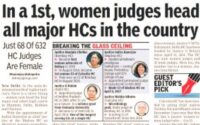Ram Mandir vs Babri Masjid: Probable Solutions
The Ayodhya dispute is a political, historical and socio-religious debate in India, centred on a plot of land in the city of Ayodhya, located in Faizabad district, Uttar Pradesh. The main issues revolve around access to a site traditionally regarded among Hindus to be the birthplace of the Hindu deity Rama, the history and location of the Babri Mosque at the site, and whether a previous Hindu temple was demolished or modified to create the mosque.

The Babri Mosque was destroyed during a political rally which turned into a riot on 6 December 1992. A subsequent land title case was lodged in the Allahabad High Court, the verdict of which was pronounced on 30 September 2010. In the landmark hearing, the three judges of The Allahabad High Court ruled that the 2.77 acres (1.12 ha) of Ayodhya land be divided into 3 parts, with 1/3 going to the Ram Lalla or Infant Rama represented by the Hindu Maha Sabha for the construction of the Ram temple, 1/3 going to the Islamic Sunni Waqf Board and the remaining 1/3 going to a Hindu religious denomination Nirmohi Akhara. While the three-judge bench was not unanimous that the disputed structure was constructed after demolition of a temple, it did agree that a temple or a temple structure predated the mosque at the same site. The excavations by the Archaeological Survey of India were heavily used as evidence by the court that the predating structure was a massive Hindu religious building.

So, the debate is on what could be the probable solution to the issue. Should Ram Mandir be built? Can Babri Masjid be relocated? Will Ram Mandir be made? Will the Supreme Court allow construction of Ram Mandir? What should be the decision of Supreme Court?
Join us in the debate from 31st March 8.00 am to 1st April 8.00 am on this topic. Comment your views in the comment box.


